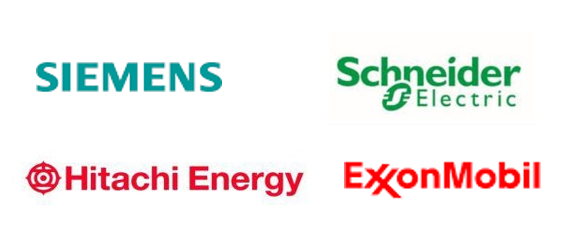Market Overview:
"The global aviation fuel market was valued at US$ 292.7 billion in 2024 and is expected to register a CAGR of 10.8% over the forecast period and reach US$ 736.7 billion in 2033."
|
Report Attributes |
Details |
|
Base Year |
2024 |
|
Forecast Years |
2025-2033 |
|
Historical Years |
2021-2024 |
|
Aviation Fuel Market Growth Rate (2025-2033) |
10.8% |
Aviation fuel, a specialized liquid energy source, powers aircraft engines to generate thrust, enabling flight. Its significance lies in being the lifeblood of aviation, ensuring safe and efficient journeys for passengers and cargo across the globe. It is being utilized by commercial airlines, cargo carriers, and military aircraft, as it is crucial component for global travel, trade, and defense. Factors driving demand include air travel expansion, rising cargo transport needs, and constant pursuit of more fuel-efficient solutions, making aviation fuel critical in enabling modern air transportation.
The global aviation fuel market is registering steady revenue growth, driven by increasing air travel demands and expanding fleets. Robust consumption of aviation fuel is owing to increasing passenger and cargo movement. Services include fuel distribution, supply chain management, and quality control. In addition, technological advancements such as cleaner and sustainable alternatives, adhering to environmental initiatives, and compliance with strict safety and environmental regulations, and rising use of biofuels are driving market revenue growth.
Aviation Fuel Market Trends and Drivers:
Rising Air Travel Demand: Increasing global air travel demand, driven by growing middle-class populations, urbanization, and tourism, directly impacts consumption of aviation fuel. Expansion of airline fleets to accommodate this demand is expected to drive market revenue growth.
Emergence of Low-Cost Carriers: The proliferation of Low-Cost Carriers (LCCs) has democratized air travel, making it more accessible to people with medium and low incomes levels. Operational efficiency and competitive pricing of LCC drive air travel, thereby increasing the need for aviation fuel and driving market revenue growth.
Technological Advancements for Efficiency: Advancements in aircraft technology, including more fuel-efficient engines and aerodynamics, contribute to reduced fuel consumption per passenger mile. As airlines seek operational efficiency and cost savings, adopting these technologies positively impacts revenue growth by optimizing fuel consumption.
Environmental Concerns and Sustainable Fuels: Growing environmental consciousness and regulatory pressures is leading to development and adoption of Sustainable Aviation Fuels (SAFs). Airlines are progressively incorporating SAFs into operations to reduce carbon emissions. This shift towards cleaner fuels aligns with market preferences and drives market revenue growth.
Increasing Long-Haul Flights: Expansion of long-haul flight routes, connecting distant destinations and hubs is driving higher fuel consumption. As global connectivity expands, airlines rely on aviation fuel suppliers to meet the demands of these extended flights, creating a positive impact on market revenue growth.
Aviation Fuel Market Restraining Factors:
Price Volatility: Fluctuating crude oil prices directly affect aviation fuel costs, impacting airline profitability.
Regulatory Compliance: Stringent environmental regulations necessitate costly adjustments to fuel formulations and infrastructure.
Environmental Concerns: Public pressure for greener aviation could lead to reduced demand for fossil fuels.
Geopolitical Instability: Political tensions and conflicts can disrupt supply chains, leading to fuel shortages and price hikes.
Emergence of Electric Aviation: Advances in electric aircraft technologies may eventually challenge demand for fuel.
Aviation Fuel Market Opportunities:
Air Travel Expansion: The ongoing growth of air travel, especially in emerging markets, presents a significant opportunity for increased aviation fuel consumption and revenue generation for global players.
Sustainable Fuels Demand: Global shift towards sustainability is creating opportunities for development and adoption of cleaner aviation fuels, catering to environmentally-conscious airlines and consumers.
Infrastructure Investment: Developing efficient and modern fuel distribution infrastructure, including storage and transportation systems, can lead to improved supply chain management and market revenue growth.
Hybrid and Electric Aviation: Emergence of hybrid and electric aircraft technologies opens doors for creating new forms of aviation fuel, contributing to revenue streams in alternative propulsion solutions for market players.
Biofuel Production: Investing in biofuel production technology and partnerships offers a chance to tap into the ongoing demand for renewable aviation fuels.
Partnerships and Alliances: Collaborations between fuel suppliers, airlines, and aircraft manufacturers can create integrated solutions, streamlining supply chains and revenue sharing.
Fuel Efficiency Consultation: Providing airlines with consulting services to optimize fuel consumption can offer an additional revenue stream while aiding sustainability goals.
Customized Fuel Solutions: Developing tailor-made fuel formulations for specific aircraft types and routes can lead to premium offerings and enhanced revenue.
Global Trade and Cargo: Expansion of international trade and e-commerce is driving need for cargo flights, and this in turn is driving demand for aviation fuel in both passenger and cargo aircraft.
Government Initiatives: Subsidies, incentives, and grants for development and adoption of sustainable aviation fuels and renewable hydrocarbon fuel can create revenue opportunities for forward-looking companies.
Maintenance, Repair, And Overhaul Services: Providing fuel-related Maintenance, Repair, And Overhaul (MRO) services to airlines can diversify revenue sources.
Emerging Technologies: Exploring emerging technologies such as hydrogen fuel cells for aviation presents long-term revenue opportunities for companies in the global market.
Aviation Fuel Market Segmentation:
By Product Type:
- Jet Fuel (Jet A-1, Jet A)
- Avgas (Aviation Gasoline)
By Technology:
- Conventional Fuels
- Sustainable Aviation Fuels (SAFs)
By End-Use:
- Commercial Aviation
- General Aviation
- Military Aviation
By Distribution Channel:
- Airport-based Fueling
- Third-party Fueling
Aviation Fuel Market, By Region:
North America:
- United States
- Canada
Asia Pacific:
- China
- India
- Japan
- South Korea
- Australia & New Zealand
- Association of Southeast Asian Nations (ASEAN)
- Rest of Asia Pacific
Europe:
- Germany
- The U.K.
- France
- Spain
- Italy
- Russia
- Poland
- BENELUX (Belgium, the Netherlands, Luxembourg)
- NORDIC (Norway, Sweden, Finland, Denmark)
- Rest of Europe
Latin America:
- Brazil
- Mexico
- Argentina
- Rest of Latin America
The Middle East & Africa:
- Saudi Arabia
- United Arab Emirates
- South Africa
- Egypt
- Israel
- Rest of MEA (Middle East & Africa)
The US is the largest market in North America aviation fuel market due to its extensive air travel network, significant number of airports, robust airline industry, and high demand for both domestic and international flights. These factors contribute to a substantial consumption of aviation fuel in the country.
Key trends driving aviation fuel sales in Europe include adoption of sustainable aviation fuels to meet stringent environmental regulations, increased focus on fuel efficiency for cost savings, growth in low-cost carriers boosting demand, advancements in digital fuel management systems, and collaboration between airlines and fuel suppliers for optimized supply chain operations.
In Asia Pacific region, growing air travel sector, expanding economies, rising urbanization, and increasing demand for both domestic and international flights in countries in this region, particularly in China and India are factors driving revenue growth of Asia Pacific aviation fuel market. These factors create significant opportunities for fuel suppliers, making these countries key contributors to market expansion in the region.
In Latin America, countries such as Brazil, Mexico, and Colombia are expected to drive revenue growth of the aviation fuel market. Substantially increasing air travel, growing aviation sector, and expanding economies, are creating favorable environment for high fuel consumption and supporting development of aviation fuel infrastructure.
The outlook for aviation fuel sales in Middle East & Africa is promising, due to strategic geographic location, growing aviation hubs, and increasing air travel. In addition, robust economic growth, expanding airline fleets, and investments in aviation infrastructure is driving aviation fuel sales in the region.
Leading Companies in Aviation Fuel Market & Competitive Landscape:
The global aviation fuel market features a competitive landscape characterized by major oil and energy companies, including ExxonMobil, Shell, BP, Chevron, and TotalEnergies SE. These key players dominate the supply chain, ensuring consistent fuel distribution. Collaborations with airlines and aircraft manufacturers enable seamless operations. The industry emphasizes research into sustainable aviation fuels to align with environmental mandates. In addition, advancements in digital fuel management systems enhance efficiency. Strategic mergers, acquisitions, and partnerships enhance market presence. The competitive landscape is dynamic, driven by regulatory compliance, environmental concerns, and continuous pursuit of innovation in aviation fuel technologies.
Company List:
- ExxonMobil Corporation
- Royal Dutch Shell plc
- BP plc
- Chevron Corporation
- TotalEnergies SE
- Phillips 66
- Valero Energy Corporation
- Marathon Petroleum Corporation
- Air BP
- World Fuel Services Corporation
- Gazprom Neft
- Neste Corporation
- Sinopec
- Reliance Industries Limited
- Indian Oil Corporation Limited
Research Scope
|
Report Metric |
Report Details |
|
Aviation Fuel Market size available for the years |
2021-2033 |
|
Base Year |
2024 |
|
Forecast Period |
2025-2033 |
|
Compound Annual Growth Rate (CAGR) |
10.8% |
|
Segment covered |
Product Type, Technology, End-Use, Distribution Channel, and Region |
|
Regions Covered |
North America: The U.S. & Canada Europe: Germany, The U.K., France, Spain, Italy, Russia, Poland, BENELUX, NORDIC, & Rest of Europe Asia Pacific: China, India, Japan, Australia & New Zealand, ASEAN, & Rest of Asia Pacific Latin America: Brazil, Mexico, Argentina, & Rest of Latin America The Middle East & Africa: Saudi Arabia, United Arab Emirates, South Africa, Egypt, Israel, and Rest of MEA |
|
Fastest Growing Country in Europe |
Germany |
|
Largest Market |
North America |
|
Key Players |
ExxonMobil Corporation, Royal Dutch Shell plc, BP plc, Chevron Corporation, TotalEnergies SE, Phillips 66, Valero Energy Corporation, Marathon Petroleum Corporation, Air BP, World Fuel Services Corporation, Gazprom Neft, Neste Corporation, Sinopec, Reliance Industries Limited, Indian Oil Corporation Limited, and among others. |
Frequently Asked Question
What are the key factors driving revenue growth of the global aviation fuel market?
Revenue growth of the global aviation fuel market is primarily driven by factors such as continuous expansion of the air travel industry, increasing demand for both passenger and cargo flights, technological advancements in fuel efficiency, and adoption of sustainable aviation fuels to meet environmental regulations.
Which regions/countries register significantly high demand in the global aviation fuel market?
Regions with high demand in the global aviation fuel market include North America, Europe, and Asia Pacific. Countries with major aviation hubs and extensive air travel networks, such as the United States, China, and European nations, contribute significantly to demand.
What are the key challenges faced by companies in the global aviation fuel market?
Companies in the global aviation fuel market face challenges such as volatility of crude oil prices affecting costs, stringent environmental regulations demanding cleaner fuel options, need for continuous technological innovation for fuel efficiency, supply chain complexities, and geopolitical factors affecting fuel supply stability.
What are the emerging trends observed in the global aviation fuel market?
Emerging trends in the global aviation fuel market include increasing adoption of sustainable aviation fuels to reduce carbon emissions, advancements in digital fuel management systems for efficiency, exploration of alternative propulsion technologies such as electric and hybrid systems, partnerships between airlines and fuel suppliers for optimized supply chains, and focus on advanced research for next-generation aviation fuels.
How are government initiatives supporting revenue growth of the global aviation fuel market?
Governments across the globe are introducing initiatives to promote adoption of sustainable aviation fuels through incentives, grants, and mandates. In addition, investments in aviation infrastructure, airport modernization, and growth of air travel contribute to high demand for aviation fuel, thereby supporting market revenue growth.

